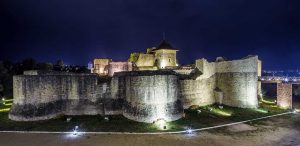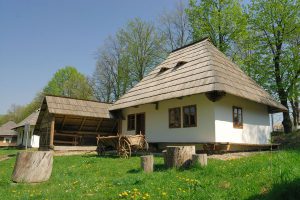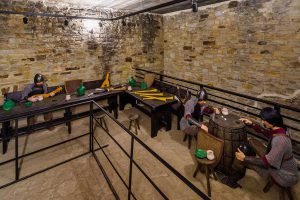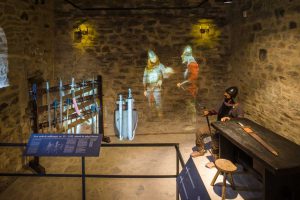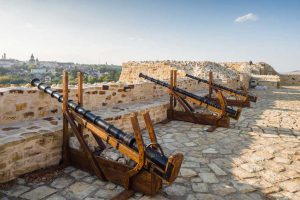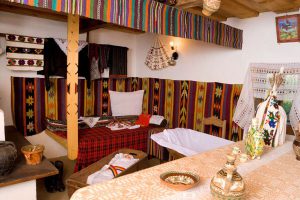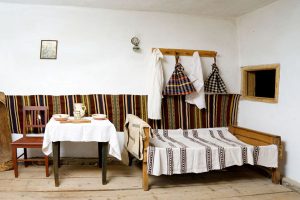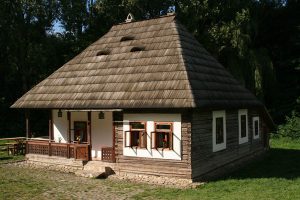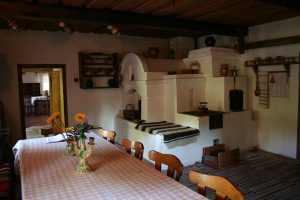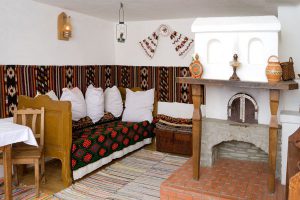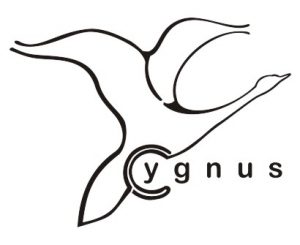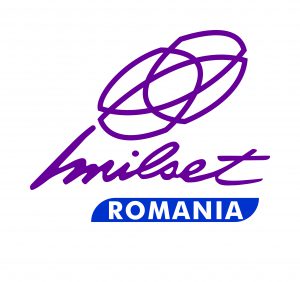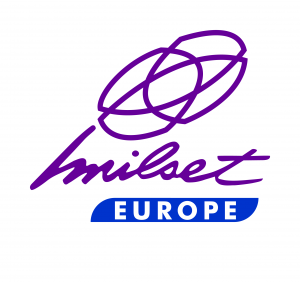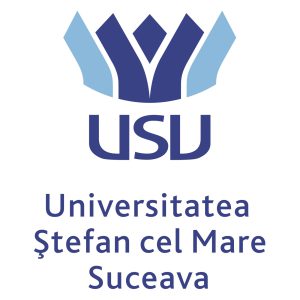MILSET Expo-Sciences Europe
The MILSET Expo-Sciences Europe (ESE) aim is promoting scientific projects created by children and young people around the world through an exhibition in a multi-cultural environment, also allowing the participation of institutions which want to assist young people in their projects.
The programme of the ESE consists of a variety of activities: the exhibition of projects, cultural and scientific visits, leisure activities, workshops, animation and conferences.
Participation at ESE is an opportunity to
- Install and animate a space to highlight youngsters’, teachers’ and leaders’ efforts and interest in research, science and technology innovation, enhancing their motivation while contributing to their personal development.
- Establish relationships with other institutions with similar goals through the development of scientific, technical and social projects in order to exchange ideas and create actions according to the needs of today’s world, for the benefit of industry, the educational sector and society at large.
- Be represented at an international level through the young peoples’ projects, allowing for the spreading of knowledge amongst the main target audience (i.e. young people).
- Promote Scientific Culture in a multi-cultural environment, allowing the sharing of experience and good practice as well as to achieve higher-standard scientific activities.
History of ESE
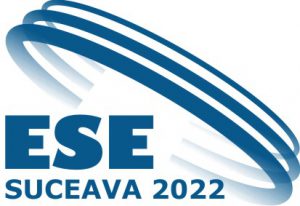 MILSET Expo-Sciences Europe 2022 (ESE 2022) MILSET Expo-Sciences Europe 2022 (ESE 2022)Dates: 24-30 July 2022 Organisers: MILSET Europe, MILSET Romania, Cygnus Place: Suceava, Romania Website: https://ese2022.milset.org |
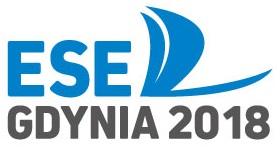 MILSET Expo-Sciences Europe 2018 (ESE 2018) MILSET Expo-Sciences Europe 2018 (ESE 2018)Dates: 16-22/07/2018 Organisers: MILSET Europe, FZT Place: Gdynia, Poland Website: https://ese2018.milset.org |
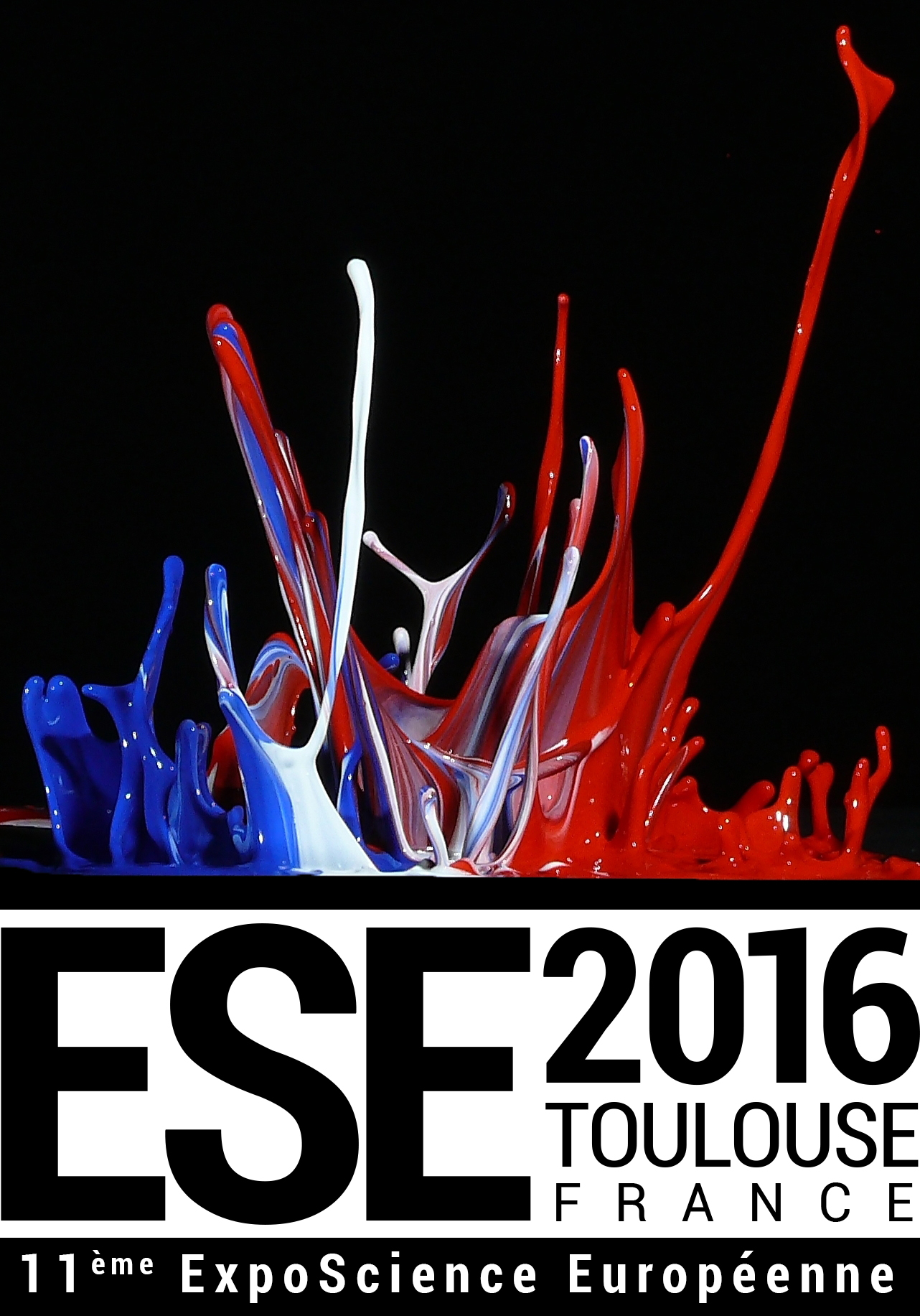 MILSET Expo-Sciences Europe 2016 (ESE 2016) MILSET Expo-Sciences Europe 2016 (ESE 2016)Dates: 09-15/07/2016 Organisers: MILSET Europe, CIRASTI Place: Toulouse, France |
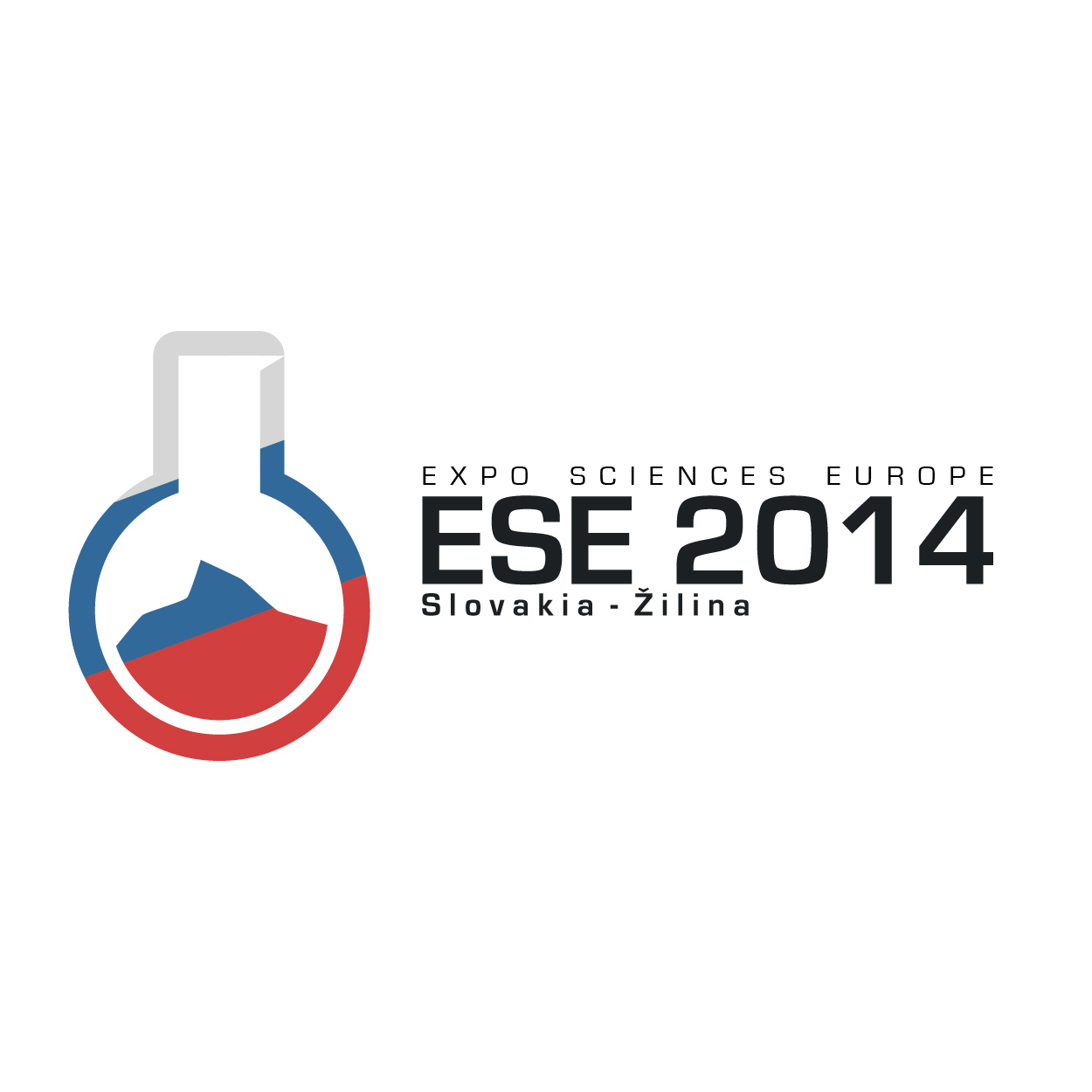 MILSET Expo-Sciences Europe 2014 (ESE 2014) MILSET Expo-Sciences Europe 2014 (ESE 2014)Dates: 09-12/09/2014 Organisers: MILSET Europe, AMAVET Place: Zilina, Slovakia Website: https://ese2014.milset.org |
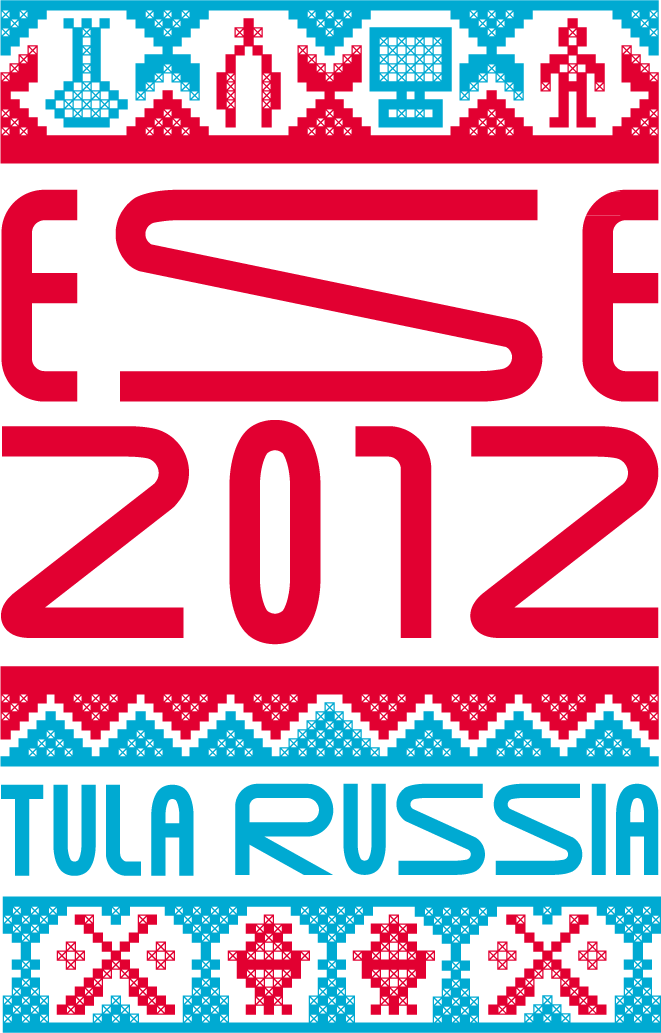 MILSET Expo-Sciences Europe 2012 (ESE 2012) MILSET Expo-Sciences Europe 2012 (ESE 2012)Dates: 02/07/2012 – 08/07/2012 Organisers: MILSET Europe, OODI, MGDD(U)T, BPHR Place: Tula, Russia Website: https://ese2012.milset.org |
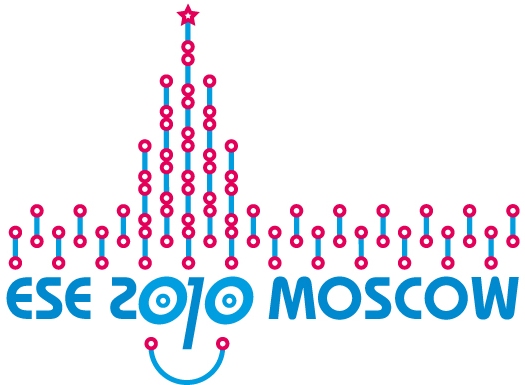 MILSET Expo-Sciences Europe 2010 (ESE 2010) MILSET Expo-Sciences Europe 2010 (ESE 2010)Dates: 27/06/2010 – 04/07/2010 Organisers: OODI, MILSET Europe Place: Moscow, Russia |
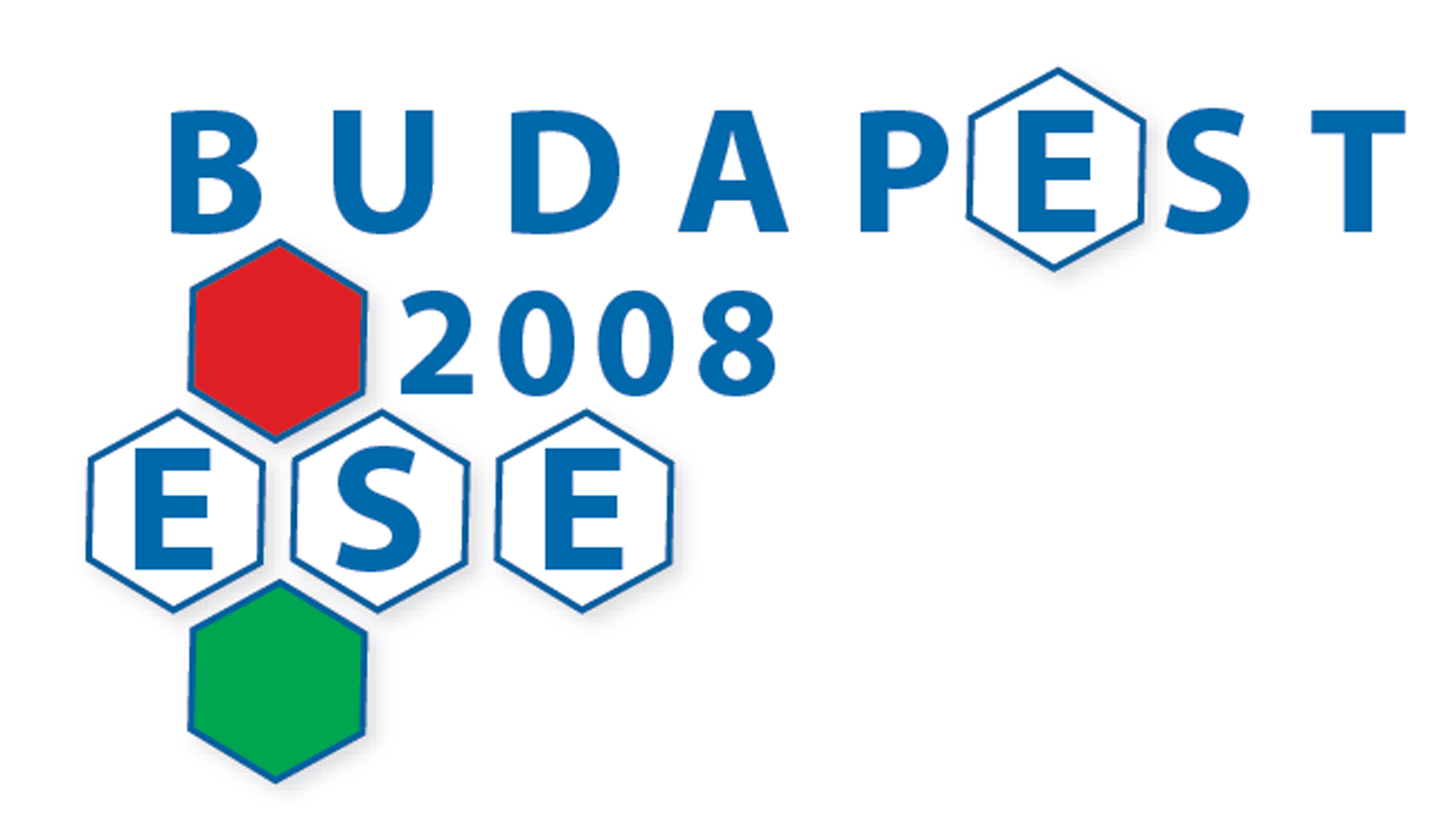 MILSET Expo-Sciences Europe 2008 (ESE 2008) MILSET Expo-Sciences Europe 2008 (ESE 2008)Dates: 13/07/2008 – 20/07/2008 Organisers: MILSET Europe, TIT Kossuth Klub Place: Budapest, Hungary |
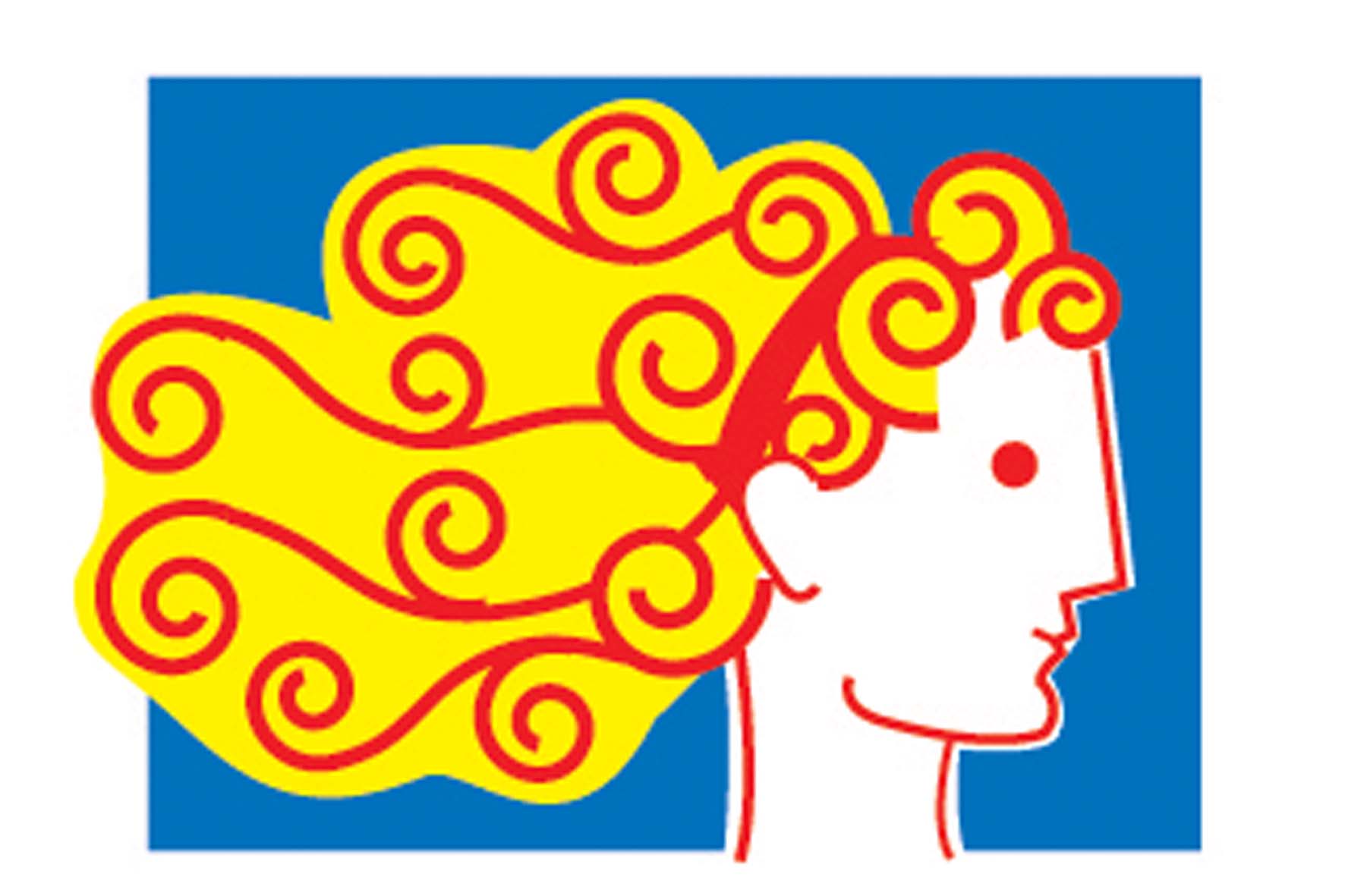 MILSET Expo-Sciences Europe 2006 (ESE 2006) MILSET Expo-Sciences Europe 2006 (ESE 2006)Dates: 16/07/2006 – 23/07/2006 Organisers: MILSET Europe, Magma Place: Tarragona, Spain Website: https://ese2006.milset.org |
 MILSET Expo-Sciences Europe 2004 (ESE 2004) MILSET Expo-Sciences Europe 2004 (ESE 2004)Dates: 08/07/2004 – 15/07/2004 Organisers: MILSET Europe, Landesverband Sachsischer Jugendbildungswerke e.V. (LJBW) Place: Dresden, Germany |
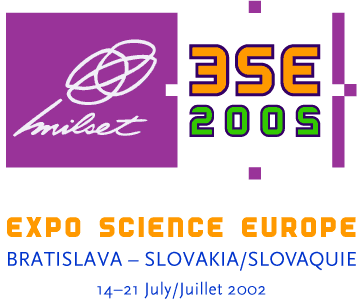 MILSET Expo-Sciences Europe 2002 (ESE 2002) MILSET Expo-Sciences Europe 2002 (ESE 2002)Dates: 14/07/2002 – 21/07/2002 Organisers: MILSET Europe, Asociacia pre mladez, vedu a techniku (AMAVET) Place: Bratislava, Slovakia |
 MILSET Expo-Sciences Europe 2000 (ESE 2000) MILSET Expo-Sciences Europe 2000 (ESE 2000)Dates: 16/07/2000 – 23/07/2000 Organisers: MILSET Europe, Jeunesses Scientifiques de Belgique (JSB) Place: Charleroi, Belgium |
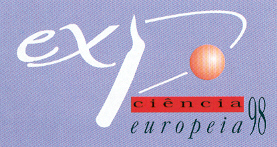 MILSET Expo-Sciences Europe 98 (ESE 98) MILSET Expo-Sciences Europe 98 (ESE 98)Dates: 17/08/1998 – 23/08/1998 Organisers: MILSET Europe, Associacco Juvenil de Ciencia (AJC) Place: Coimbra, Portugal |
 MILSET Expo-Sciences Europe 96 (ESE 96) MILSET Expo-Sciences Europe 96 (ESE 96)Dates: 15/07/1996 – 19/07/1996 Organisers: MILSET Europe, Asociace pro mladez, vedu a techniku (AMAVET) Place: Prague, Czech Republic |
University “Ştefan cel Mare” of Suceava
Ștefan cel Mare University of Suceava (USV) is one of the fastest rising universities in the Eastern European region providing higher education of high quality standards at a relatively low cost. It is one of the very few universities in this region with a comprehensive curriculum including more than 100 programs at undergraduate, master, doctoral and post-doctoral level from all five faculty areas (Arts & Humanities,Engineering & IT, Life Sciences, Natural Sciences and Social Sciences). A unique educational outpost that goes back nearly half a century, USV’s transnational platform is aimed at discovering, preserving and disseminating knowledge while promoting basic European principles, such as unity through diversity, in an area where the credibility and identity of the European Union needs to be strengthened and further increased.
Located in the beautiful and multicultural land of Bukovina, USV is surrounded by the greatest density of UNESCO monuments from this part of Europe, precious art monuments, great spiritual life and rich folklore traditions offering its students great opportunities for extra-curriculum activities.
What also stands out is USV’s ability to sustain regional development at national level within the North-Eastern area, as well as at transnational level through Ukraine and Republic of Moldova close partnerships.
USV is a Romanian institution of higher education situated at the confluence of important European cultures and civilizations. Its mission is to preserve and foster cultural diversity, to strengthen the relations with the Romanians across the border by encouraging new bilateral agreements and partnerships with universities from the European Union, as well as with non-EU institutions of higher education from Eastern Europe.
Suceava
Once the capital of Moldova (from 1388 until 1565), Suceava is an excellent starting point for trips to the many historical, cultural and natural attractions travelers can enjoy in the Bucovina region. Suceava is also the gateway to visiting the Painted Monasteries of Bucovina.
The town has some noteworthy attractions of its own, including Saint George’s Church, a UNESCO World Heritage site, the Bucovina Ethnographic Museum, with its valuable folk costumes collection and traditional items exhibits, and Suceava’s main tourist site, the remains of the Princely Court.
Other sights in Suceava include the 14th century Mirauti Church, the Zamca Monastery and the Bucovina Village Museum, dedicated to the woodcraft, ethnography, history and folk art of the region. The Bucovina History Museum displays medieval armor, coins, weaponry, tools and ancient documents. Visit these archeological and historic gems before heading to the painted monasteries area.
The Fortress
The Princely Fortress of Suceava built at the end of the 14th century near the Suceava medieval city had been the main residence of Moldavia’s rulers for almost 200 years. Today it is an important national historic monument.
The medieval arhitectonic assembly comprising the castle and the protection walls was consolidated and completed within a large financed project between 2011 and 2015 which restored the legendary spectacular look and the former subtle princely glamour.
In 2016 in Suceava’s Fortress there was organized the first permanent exhibition which illustrates important themes of great interest for the public, such as the first and the most comprehensive presentation of the medieval weapons in Moldavia, of the heraldic symbols of the Moldavian rulers and aristocrats between the 14th and 17th century or Moldavia’s medieval Treasure. For the first time the lapidarium recomposes the most complete image of Suceava’s fortress while it outlines the constructive systems and the architectural decoration, predominated in the 15th century by different Gothic themes. Medieval household facilities, such as the glazed stoves combine local decorative motifs with Central-European ones in an absolutely surprising and elegant way. The multimedia systems with medieval historical themes and video projections with subjects about the history of the fortress represent an innovation concerning the exhibition in Romania. The most well received by the visitors are Moldavia’s interactive book of medieval history – The foreigners about us and the video projection The Chronicle of Suceava’s Fortress, which reconstitutes an astonishing and animated world, remote and stil very real having the strong feeling we are all part of the same story!
Bukovina Village Museum
The general image of Bukovina Village Museum reflects the organisation and the complex activity of the traditional village, the vernacular architecture of the households and of the community constructions, of the technical facilities which illustrate the occupations and crafts in the area and the way of life of the Bukovina dwellers. Next to the households formed by houses and annexes located along the narrow street, in the centre of the village, as central point of the life of the community, there can be found the Vama church and bell tower, the Șaru Dornei public house and the Securiceni school.
On the river valley which crosses the museum there are located hydraulic technical installations: Mănăstirea Humorului water mill, the mill machine, the hackle for wool processing. The occupations and crafts are represented in workshops equipped with the inventory specific to each profession. Here, the traditional working techniques can be demonstrated and learnt, as they are used as school-workshops for children or tourists.
The organisation of the interiors represents an ethnographic exhibition which complies with the local particularities of the folk architectural objects. The ovens, the stoves can be found in the museum in a variety of types; the traditional furniture, the textiles for the interior, the pieces of clothing representing folk costumes complete the image of the traditional Bukovinean civilisation.
The novelty for the museum is the representation of the spiritual life of the peasant by marking passing rituals, birth and funeral ceremony, as well as the integration rite which is the wedding.
The interest which this type of museum reveals, bases on several defining elements: the exhibition in a natural environment, different construction techniques and specific decorative elements with symbol value, the recreation of a traditional way of life, the document value with educational purpose, the exhibition of the ethnographic collections as close as possible to the utility of the object within the background and not only as museum object, allow the visitor to understand and value, Bukovina’s traditions.
History museum
The permanent exhibition of the History Museum is located in the building situated in Ştefan cel Mare street, no. 33 in Suceava. Built at the beginning of the 20th century, the building, historic monument preserves its faced almost unchanged. The interior underwent numerous changes in the course of time, especially since it became the headquarters of the History Museum. The construction which hosted the former Prefecture during the Austrian period has been transformed in order to be used as museum, the last changes being made between 2014 and 2016, within the European project A heritage building –a museum for the 3rd millennium.
The new permanent exhibition of the History Museum was inaugurated on the 31st of July 2016, in the same location, at the first floor, as the previous exhibition. The new presentation is based on the local history, reflected in the multiple archaeological discoveries made in the course of time, but also in the multiple events, which had as central evolution place, the present territory of Suceava county. The multiple exhibited heritage objects are explained within their historical context with the help of the touch-screens which exist in the entire exhibition, completing the knowledge of the visitors eager to find new information.
Although the basis of the permanent exhibition is the local history, this cannot be understood outside our national history and general European background: for over a century and a half Suceava has been the residence of Moldavia’s rulers. The loss of this statute, when the city of Iaşi becomes ”the new capital” lead to the fall of Suceava’s importance and to the damage of the existing monuments. The Austrian occupation meant the separation of the northern part of Moldavia from the history of this Romanian historical province. The union of Bukovina with Great Romania brought to other necessary changes for the consolidation of the new state. The two world wars, the communist regime meant hardships for the local population in this period.
The presentation of history in the permanent exhibition ends in the year 1989 with the anticommunist demonstrations carried at Suceava in December 1989.
The permanent exhibition of the History Museum is displayed chronologically, in 27 halls, from the oldest archaeological discoveries, dating from Lower Palaeolithic discovered at Ripiceni (Botoşani county) until the revolution of 1989. The largest part of the exhibition is owed to the archaeological discoveries, starting from hall no.1 until hall no.15, inclusively. The archaeologists laid stress on events which took place over the history with the help of the most spectacular objects discovered, where each object may tell a story: ornaments, weapons, coins, vessels, archaeological textiles, etc.
Romania
Romania is a country in southeastern Europe. It is north of the Balkan Peninsula, on the Lower Danube River. Part of Romania is circled by the Carpathian Mountains. It also has a border on the Black Sea. Most of the Danube Delta is found inside Romania. Romania shares borders with Hungary and Serbia to the west, Ukraine to the far northeast, the Republic of Moldova to the near northeast, and Bulgaria to the south. The capital and biggest city in Romania is Bucharest, with a population of 1.6 million. There are 5 other cities in Romania that have a population of more than 300,000 people. These are Iaşi, Cluj-Napoca, Timişoara, Constanţa, and Craiova.
One of the cities in Transylvania, Sibiu, was named a European Capital of Culture. Romania joined NATO on March 29, 2004. Romania joined the European Union on January 1, 2007.
The land in Romania is made up of equal parts of mountains, hills, and low-lying areas. The Carpathian Mountains make up a big part of the center of Romania. Romania has a climate that changes between temperate and continental climates.
Cygnus
Established in 1999 as an NGO, the CYGNUS Scientific Society – UNESCO Center (Societatea Stiintifica CYGNUS – centru UNESCO) has taken charge of promoting the scientific values of the young generation.
In May 2001, CYGNUS received the right of publication under the Copyright Act, and in October 2001, the Society was accepted as a UNESCO centre by the Romanian Federation of UNESCO Associations, Clubs and Centres.
At the present time, the center’s activities occur under the patronage of UNESCO.
CYGNUS is one of important scientific organizations for young people in Romania. Through its activities, CYGNUS constitutes itself as a bridge which connects an academic approach with a pragmatic one; with the purpose of using and building on new theories, models, concepts and notions supplied by studies as well as research taking place in the domain of education students in scientific spirit, for science and using the science.
Mission: The goal of CYGNUS (research, feasibility studies, design, consulting) is to use and build on the intellect and expertise of youth in the scientific field which target the development of human performance and the improvement in quality of life. In addition, CYGNUS focuses on passing the higher level of scientific thought, through the implementation of a Knowledge Based Society.
Objectives
- popularization of science among the population, especially on young people;
- high-level scientific research and nonformal education;
- promoting numerous scientific, cultural, historical and geographical entities of Europe and World.
Programme
- Publishing the periodicals, including material produced by members, in areas as diverse science, to addreses to extended segment of the population especially for education;
- The development of multimedia products (CD-ROM, web pages, etc..), videos, leaflets, brochures, radio-TV, which helps to popularize science;
- Organization of scientific meetings, colloquia, symposia, seminars for youngs on scientific topics;
- Supporting the young local researchers to make known the results of their work by publishing books in the country and abroad;
- Stimulate inventions and innovations by organizing competitions;
- Establish and equip a modern multidisciplinary research laboratory for attract young people to science;
- Publishing a booklet containing the studys, subjects of the activities, thesis as high scientific level;
- Establishment of a nonformal activities for gifted children, stimulate and promote them
Main Projects
- METAMORPHOSES – Transdisciplinarity Summer School, Gura Humorului, Romania (15 editions)
- FRACTAL – COMPLEXITY National Summer School for Complexity Science, Romania (5 editions)
- ATLANTYKRON International Summer Academy, Capidava, scientific programs (12 editions)
- EUREKA! – CYGNUS National Physics Colloquium for physics teachers, Romania (11 editions)
- WEEKEND SCHOOL – Programmes of cultural-scientific education
- NEXUS-T – Programme of non-formal interdisciplinary sciences education (7 years)
- RoSEF – Romanian Science and Engineering Fair for Students, Suceava, national contest (9 editions)
- National Camp for Astronomy, Astrophysics and Physics for students, Voronet (6 editions)
- School on wheels, UNESCO program to attract young people from remote areas to science (12 years)
Contact
- Mail: Oituz Street, 21, Bl. O2, Sc. A, ap. 20, Suceava – 720201, ROMANIA
- E-mail: suceava_romania@gmail.com
- GSM: +40.722537125, +40.74562476
MILSET Romania
Mission and objectives
- MILSET Romania will act as a non-governmental organization, non-profit and apolitical. As an independent organizaton it aims to develop scientific culture among young people by organizing programs for science and technology, science fairs, science camps, conferences, contests, forums, seminars, courses or other similar activities for scientific, educational, cultural.
- Romania will be a member MILSET and MILSET Europe will respect the regulations and resolutions in force, supporting young people to pursue excellence in terms of intellectual property.
- Members MILSET Romania shall inform each other about the work and the opportunities that are emerging useful for the progress of cooperation, whenever the situation demands.
- Annual organization of national competitions for the selection of participants in the activities of MILSET Europe and MILSET International.
Specific actions MILSET Romania
- Partners will engage in activities to support young people with an interest in science, technology, engineering, mathematics,by motivation, cooperation through networking and by organizing specific activities, highlighting the importance of science and technology in a society, emphasis on the social development, business culture and human wellbeing
- Partners will collaborate with similar institutions in the country and abroad to organize specific activities and will involve teachers and researchers in order to achieve the MILSET objectives;
- Youth networks will be stimulated and supporteds and national and the international cooperation, will generate global opportunities for youth by engaging them in creative activities, scientific and technical;
- The partners are involved in the current revolution of science and technology in information and communication and will advocate for the free exchange of knowledge and building networks for sharing knowledge in a knowledge society;
- Focus will be on developing and strengthening cooperation relations between academia, research institutions and the undergraduate level;
- It will focus on the development of professional performances by organizing orientation activities for young people to transform society through creative initiatives in science and technology;
- Considering that the future society is being educated right now, members will collaborate to improve teaching activities, transfer of good educational practices, supporting practical activities of pupils and students;
- Develop partnership proposals for educational projects, scientific research, innovation, competitions of national and international programs, respecting ethics of science and engineering.
MILSET Europe
MILSET Europe is a European non-governmental, non-profit and politically independent youth organisation, which aims at developing scientific culture among young people through the organisation of science-and-technology programmes, including science fairs, science camps, congresses and others activities of high quality.
Vision
Inspiring youth through science and technology initiatives.
Mission
MILSET supports its member organisations to engage youth in science, technology, engineering, mathematics and the arts (STEAM) through motivation, cooperation, collaboration, and networking.
Stefan cel Mare University of Suceava
One of the most dynamic higher education institutions in Eastern Europe, Stefan cel Mare University of Suceava (USV), located in Bukovina, a region in north-eastern Romania.
USV is an innovative and complex public higher education institution, which offers undergraduate, master’s, doctoral and post-doctoral programs and conducts scientific research in the fields of economics, technical sciences, engineering and computer science, natural sciences, humanities and health.
The first university in Romania in terms of the number of patents and inventions in the last decade, USV plays a key role in the development and dissemination of scientific knowledge. Since its establishment in 1963, our university has been a strong presence in a city of over 100,000 inhabitants, with a decisive contribution in building a modern identity for the local community, in the geopolitical context of regional development and cross-border relations between Romania, Ukraine and the Republic of Moldova.
After more than half a century of service to higher education in the city of Suceava, USV responds to the challenges of new bold projects with enthusiasm and responsibility, assuming its protective and rewarding role for countless academic performances, human models and moral landmarks that have undoubtedly contributed to the evolution and emancipation of national spirituality.
Once you arrive at USV in Bukovina, we hope you will rediscover the principles of an authentic life based on freedom, knowledge, morality, tolerance, responsibility, and excellence.
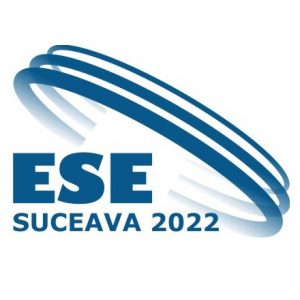
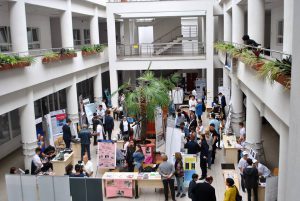
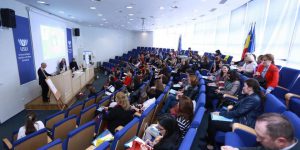
![buildingH[1]](https://ese.milset.org/2022/wp-content/uploads/2019/01/building20H1-300x200.jpg)

